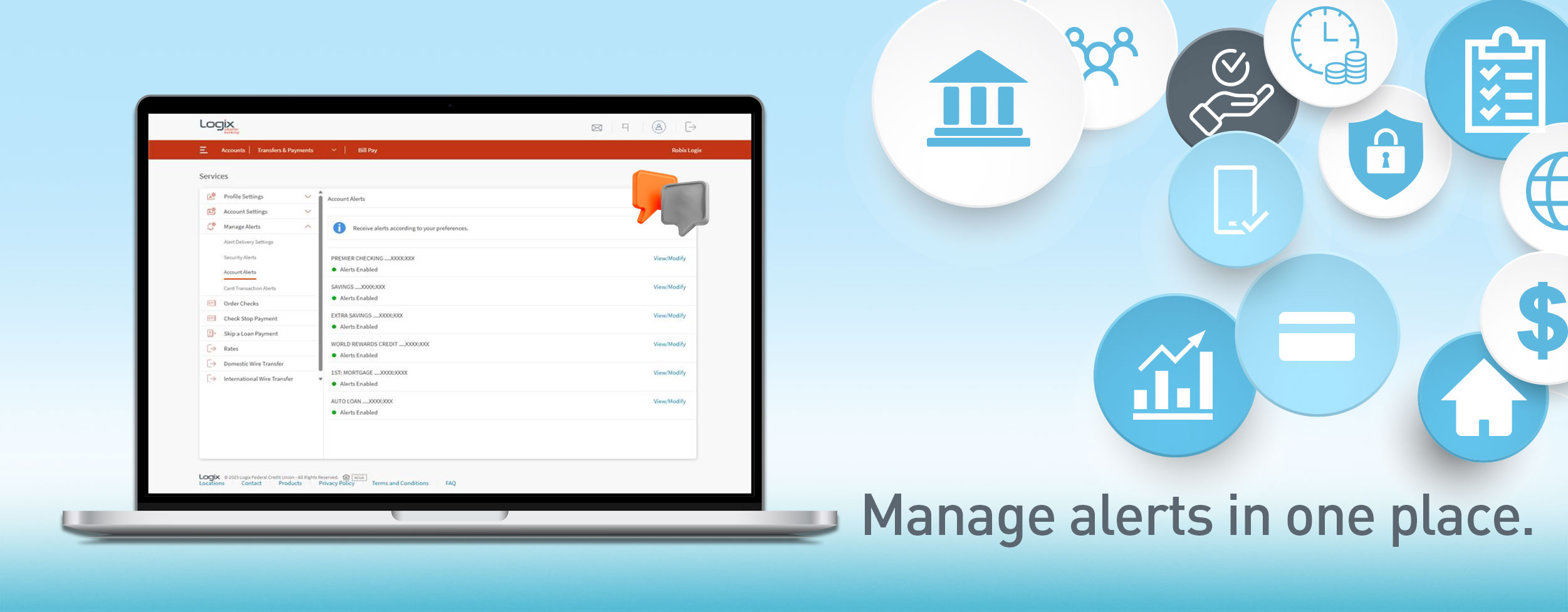
Let’s face it: nobody likes to pay a fee. At Logix, we’re especially keen on limiting fees to our members, and this 2015 independent study by Consumer Reports indicates that our members think we’re doing a great job of keeping fees low.
Low is great, but why do banks and credit unions have fees at all? In order to understand why your financial institution has fees, it's important to first know how it makes money.
There are really only two ways:
- Interest income: This is the difference between the interest paid on deposits and the interest paid to the financial institution on loans.
- Noninterest Income: As the name suggests, that’s revenue a financial institution makes from other sources.
This post is about noninterest income. It’s an important, and often misunderstood, element of a banking relationship. Some of the largest generators of noninterest income for financial institutions are interchange payments (the money paid by retailers to the financial institution when members pay for purchases with credit or debit cards), the sale of assets (like when some banks sell your mortgage), investment gains, and (ominous drumroll) fees.
Fees allow financial institutions like Logix to offer services beyond basic loans and deposits. Generally speaking, if a service doesn’t help an organization make sufficient interest income, there will be a fee associated with it. And while consumers (this author included) tend to think of that as an annoyance, it is really the way almost all transactions work even outside of banking: A service is traded for money.
 Some banking institutions make a very large percentage of their income from fees. Many of these organizations cater to people who represent a high degree of risk for traditional loans and accounts. For example, many payday lenders will offset risk with much higher loan rates and very high fees.
Some banking institutions make a very large percentage of their income from fees. Many of these organizations cater to people who represent a high degree of risk for traditional loans and accounts. For example, many payday lenders will offset risk with much higher loan rates and very high fees.
Conversely, not all banking organizations charge fees. Instead, some choose to simply not offer many of the services the modern banking customer has become accustomed to. For example, certain organizations will simply not pay customer overdrafts and let card transactions decline. For these organizations, the cost of developing and risk of offering an overdraft protection service would be too high.
At Logix, we have a tough decision to make: How can we offer services which involve expense and risk to us (and because we are member-owned, to our members), while still offering the very best service and making sure unpleasant fees are not a regular part of the membership experience? The answer is we strive to price all of our products and services so that they create as close to "an equal exchange of value" as possible. That simply means that the cost of providing the product or service is offset by the interest and/or non-interest revenue charged for that product or service.
We want to offer as many services to members as possible, and to make sure members are aware of the many ways they can avoid paying fees.
With this in mind, we’d like to tell you about some of our more popular fee-based services, and offer some important ways to avoid them:
- Courtesy Pay Fee
One of our most popular services is Courtesy Pay, which allows members to overdraft from their checking account and be covered by Logix at a fee of $29 per transaction. This is significantly less than the fee at any of the “big four” banks, which each charge either $34 or $35. Unless you have opted-in to Courtesy Pay, it is not available to you. If you are interested in seeing if this service is available to you, please call 800-328-5328.
We are also proud to offer some great ways to avoid Courtesy Pay. The easiest way, by far, to avoid Courtesy Pay fees is to monitor your balance and not overdraft. We offer free tools to help you do that. Visit the alerts section in Online Banking to set up email alerts which notify you when you reach certain balance thresholds. You can also sign up for a Logix credit card and ask that the remaining balance on your credit card be used for overdrafts. This service has a smaller charge of just $4 per transaction.
- Low/Minimum Balance Fee
It can cost a lot of money to offer accounts. For example, just mailing a monthly paper statement can run $3 per account or more. Let alone the cost to offer world-class service. Sometimes the costs of offering these accounts are offset by the interest and non-interest income they generate. In other instances, however, the balances in accounts are not high enough for us to cover costs. In these instances, it is our responsibility to the members at large to ensure that one group of members doesn't end up paying the costs of the relationships of another group of members. This is the reason for the Low Balance Fee. The good news is that the Logix minimum balance requirement to avoid the Low Balance Fee, and the amount of the fee itself, are significantly less than any of the “big four” banks.
- Non-Sufficient Funds (NSF) Fee
This fee only applies to members who have not opted-in to Courtesy Pay or another method of overdraft protection. It is the fee charged when there is a check written on nonexistent funds.
Simply put, the best way to avoid this fee is to write checks exclusively on balances available to you. We offer tools within Online Banking to help you set up alerts on your account when your balances go below a certain threshold. These alerts also help you to quickly identify if you’ve been the victim of Identity theft. Other options include opting in to Courtesy Pay, which has the same fee as NSF, but covers the transaction you’re trying to complete, or establishing another method of overdraft protection, such as a credit card.
If you would like to see a complete list of our fees, please visit our Schedule of Service Charges and Fees.





%20(952%20x%20317%20px)-2.png)






